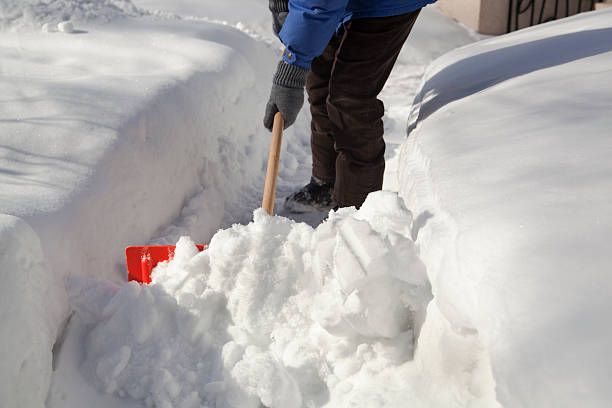Winter is coming to northern Michigan, and that means our physical therapy offices are about to see a patient or two every week who injured themselves while clearing their sidewalks or driveways.
I admire anyone who likes to get out in the fresh air and get a little exercise, but I hate to see someone laid up for weeks at a time when a few ounces of prevention can keep them safe. Here are a few common injuries associated with moving snow:
- Back/sacroiliac joint strains- If you remember nothing else from this article, let it be this: any activities which combine bending, lifting, and twisting (BLT) while moving a load are high risk for causing injury. When the load being moved is further from the torso, the risk of injury increases even more. The 10 pounds of snow at the end of a 3-foot shovel can require around 30 pounds of force to move. If it takes 50 full shovel loads to clear your driveway, you will have lifted 1,500 pounds to get the job done! Unless you’re used to that kind of frequent lifting, there’s a good chance you’ll be feeling it the next day.
Shoulder strains- The rotator cuff is particularly vulnerable to repetitive lifting injuries when loads greater than a few pounds are involved.
Elbow strains- Did you know that you can get tennis elbow (lateral epicondylitis) from shoveling? Indeed, you can. The tendons involved in lateral epicondylitis are under significant strain when shoveling, leading to microtrauma and inflammation of the tissues. Lifting the snow with your legs and getting the front hand closer to the end of the shovel are two tricks to reduce strain at the elbow.
Since it is clear that shoveling is a high-risk activity for your body, here are some suggestions to keep yourself out of trouble this winter:
- Warm-up- Before shoveling, get your muscles warmed-up with 3-5 minutes of light exercise. A simple brisk walk around the neighborhood will do the trick. Follow that with 10-15 squats to help your legs remember to do their share of the lifting.
- Push rather than Lift– Try to push the snow instead of lifting and throwing it. When you do need to toss it, keep the head of the shovel as close to your torso as possible, and avoid bending and twisting as best you can.
- All things in Moderation– Don’t tackle a 4-foot drift at once. Take a short break every 15-25 minutes and prevent dehydration by drinking plenty of fluids. Good hydration keeps your tissues (back muscles and lumbar discs) resilient to the stress of pushing and lifting heavy snow.
- Listen to your Body– If you start to feel burning or aching, that’s your body sending you a message that you need to stop and take a break or get someone else to finish. If the initial symptoms don’t go away, get it checked out by your physician or a physical therapist. If you experience chest pain, shortness of breath or other signs of a heart attack, stop and seek emergency care.
- Dress for Success-Wear light, layered, water-repellent clothing because it provides both ventilation and insulation. Avoid falls by wearing shoes or boots that have slip-resistant soles.
- Just Don’t Shovel- Put plainly, the best way to avoid an injury from shoveling snow is to not shovel snow. A new snowblower at Ace Hardware will probably run you about $800, or you might pay a teenage neighbor to do it. Compared to the $1,500+ cost of an MRI, your money would be well spent on prevention.
Finally, you should keep your body strong and mobile so it can handle all of your home maintenance activities across the seasons. If you’re having aches or pains that have been present for more than 2 weeks, or if a shorter-term ache is severe, call your physical therapist for a consultation to get a plan in place to address the issue sooner than later.







